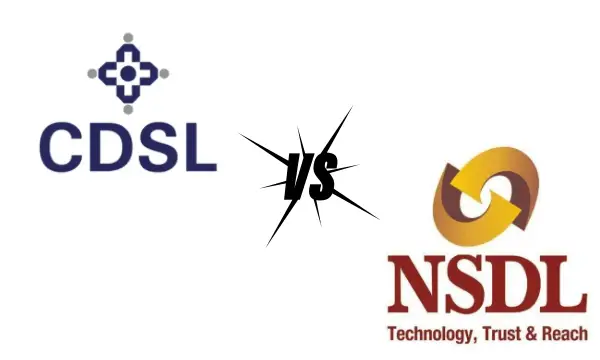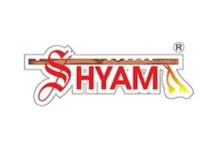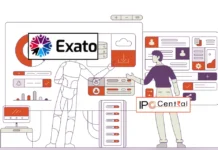In the world of the stock market, you might have come across the terms CDSL and NSDL. These are depositories that hold securities such as shares, debentures, bonds, mutual fund units, etc. of investors in an electronic format called a demat account. For investors, it is always an important parameter whether to open the demat account in CDSL or NSDL. Well, time to settle the CDSL vs NSDL debate.
Let’s first understand what exactly are depositories. The primary function of depositories is to transform tangible securities into digital formats and store them in the investor’s demat accounts. To know more about these depository companies, keep reading!

How do Depositories Work?
Let’s understand this with an example: just like you use a bank account to store and manage your money, Demat accounts hold your investments like shares, bonds, etc in electronic form. Think of it like this: a bank account holds your cash, while a Demat account holds your investments, both safely and digitally. These shares are dematerialized, which means that they no longer exist as physical certificates.
In India, two depositories handle these Demat accounts, and NSDL and CDSL full form are National Securities Depository Limited and Central Depository Services Limited. Out of the two, the former is listed on the stock exchange through CDSL IPO which was launched in 2017 and rewarded investors handsomely. Meanwhile, NSDL’s IPO application is currently pending with SEBI, awaiting regulatory approvals.
Read Also: Top 10 AC brands in India
What are CDSL and NSDL?
SEBI regulated CDSL and NSDL were founded in 1996 and 1999 respectively. They manage electronically the ownership of financial securities held in Demat accounts of investors in India. Investors access these accounts through Depository Participants (DPs) also known as stockbrokers. Since investors cannot directly open Demat accounts with NSDL or CDSL, they have to go through DPs registered with either depository.
Each brokerage firm decides to register with one or both the depositories. For example, Zerodha and Groww are DPs with CDSL, while Upstox and Motilal Oswal are registered with both NSDL and CDSL.
Services: Both CDSL and NSDL hold investments like shares, bonds and mutual funds electronically in Demat accounts. They offer services like trade settlement, securities transfer between Demat accounts, off-market transfer of securities, e-voting, online access to statements and distribution of corporate actions like bonus share issues, mergers and share splits. To ensure the safety and confidentiality of investors’ information, they use advanced technology and top security measures like 128-bit SSL encryption, two-factor authentication and firewalls.
NSDL and CDSL charge one time account opening fee, annual maintenance fee and transaction fee for their services. The fee varies with Depository Participants.
These depositories facilitate the automatic transfer of benefits to the demat accounts of the respective shareholders.
Read Also: Multibagger Penny Stocks for 2025
CDSL vs NSDL: Key Difference Between NSDL and CDSL
In the world of depositories, CDSL and NSDL are like two sides of the same coin. Both offer essential services like dematerializing shares, settling trades, and transferring securities between accounts. They even handle corporate actions like bonus issues, mergers, and splits. While CDSL currently boasts a larger market share of active accounts compared to NSDL, both depositories act as secure digital vaults for your investments, ensuring their safety and ease of management.
| FEATURES | CDSL | NSDL |
| Full Form | CDSL is an abbreviation for Central Depository Services Limited, is a financial institution that helps people hold, trade, and settle securities electronically | NSDL is an abbreviation for National Securities Depository Limited (NSDL) is a financial institution that helps people hold, trade, and settle securities electronically |
| Incorporation Year | 1999 | 1996 |
| Total Depository Participants (Brokers) | 577 participants | 291 participants |
| Active Demat Accounts | More than 15.12 crore demat accounts | More than 3.92 crore demat accounts |
| Operating Market | BSE | NSE |
| Promoters | SBI, BSE, HDFC Bank, PPFAS Mutual Fund, LIC, and Standard Chartered Bank | IDBI Bank, Unit Trust of India, and the National Stock Exchange |
| Demat account number format | CDSL has 16-digit numeric code | NSDL has a 14-digit numeric code |
| Subsidiaries | 1. CDSL Ventures Limited (CVL) 2. CDSL Insurance Repository Limited (CDSLIR) 3. CDSL Commodity Repository Limited (CCRL) | 1. NSDL Database Management Limited 2. NSDL Payments Bank Limited |
As one can see, one of the key difference between NSDL and CDSL is related to the broker network. This is a crucial difference as brokers are the ones who drive sales for depository companies. On this front, CDSL steals a march over its older competitor.

CDSL vs NSDL: Bottomline
It all depends on which broker and features you like. Some brokers offer accounts linked to both NSDL and CDSL while others may have ties up with just one of them. Consider fees, services offered and the broker’s reputation while making your decision. In effect, the CDSL vs NSDL debate is inconsequential for investors as their primary interaction is with brokers.
Remember both NSDL and CDSL are registered with the Indian government and regulated by SEBI, so safety, security and fair practices are ensured. The choice is all about finding the best fit for your investment journey.
CDSL vs NSDL FAQs
What is the primary function of depositories like CDSL and NSDL in the stock market?
The primary function of depositories such as CDSL and NSDL is to transform tangible securities into digital formats and store them in investors’ demat accounts, facilitating secure and electronic management of investments.
What is the NSDL and CDSL difference?
While both CDSL and NSDL provide similar essential services, CDSL currently holds a larger market share of active accounts. The choice between them often depends on individual broker preferences, fees, and services offered.
What are the fees associated with opening and maintaining demat accounts with CDSL and NSDL?
CDSL and NSDL charge a one-time account opening fee, an annual maintenance fee, and transaction fees for their services. The specific fees vary based on the depository participants and should be considered when selecting a broker for opening a demat account.





































